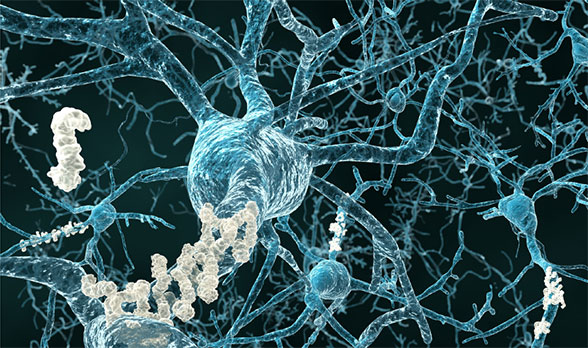During the past decade, brain researcher have succeeded in implanting false memories into humans, causing them to hear sounds that do not exist and hallucinate while sleeping. A new study by a team of researchers at the University of California San Diego has reported a method to erase and then restore memory in a rat model. The research could lead to treatments for neurologic conditions such as Alzheimer’s disease and post-traumatic stress disorder (PTSD).
The investigators first created a memory in the rat’s brain. This was accomplished by stimulating a group of nerves in the rat’s brain with a tone; at the time of stimulation, the rat received a mild shock to the foot. As a result, the rat perceived the tone to equate with the fear of getting a mild shock. The researchers then lessened the connection between the brain cells; this effectively erased the shock memory. They then strengthened the brain connection by stimulating the synapse with a different frequency. Thus, by varying the stimulation, the researchers were able to turn memories on or off.
The study authors noted that their researchers reinforces the concept that synapses are important for the control memory. Although the study was conducted on rats, the researchers note that the findings are applicable to manipulating memory in humans. Alzheimer’s disease sufferers are impacted by a loss of memory. PTSD involves memories of certain traumatic events that cause problems such as severe anxiety and depression.
According to the Los Angeles County Department of Public Health, over the next 20 years due to the influx of baby boomers into the senior population. In addition, people are currently living longer, and the incidence of Alzheimer’s disease increases with age. As a result, the health department predicts that the number of Alzheimer’s disease sufferers will double in the next two decades.
According to UCLA Health System, PTSD is a debilitating condition that often follows a terrifying physical or emotional event; after experiencing the event, the individual may have persistent, frightening thoughts and memories, or flashbacks of the ordeal. Individuals with PTSD often feel chronically, emotionally numb. The disorder was first brought to public attention by war veterans and was once referred to as “shell shock” or “battle fatigue.” The likelihood of developing PTSD depends on the severity and duration of the event, as well as the person’s nearness to it.
The events that triggers PTSD may be:
Something that occurred in the person’s life
Something that occurred in the life of someone close to him or her
Something the person witnessed
Examples include:
Serious accidents (such as car or train wrecks)
Natural disasters (such as floods or earthquakes)
Man-made tragedies (such as bombings, a plane crash)
Violent personal attacks (such as a mugging, rape, torture, being held captive, or kidnapping)
Military combat
Abuse in childhood















